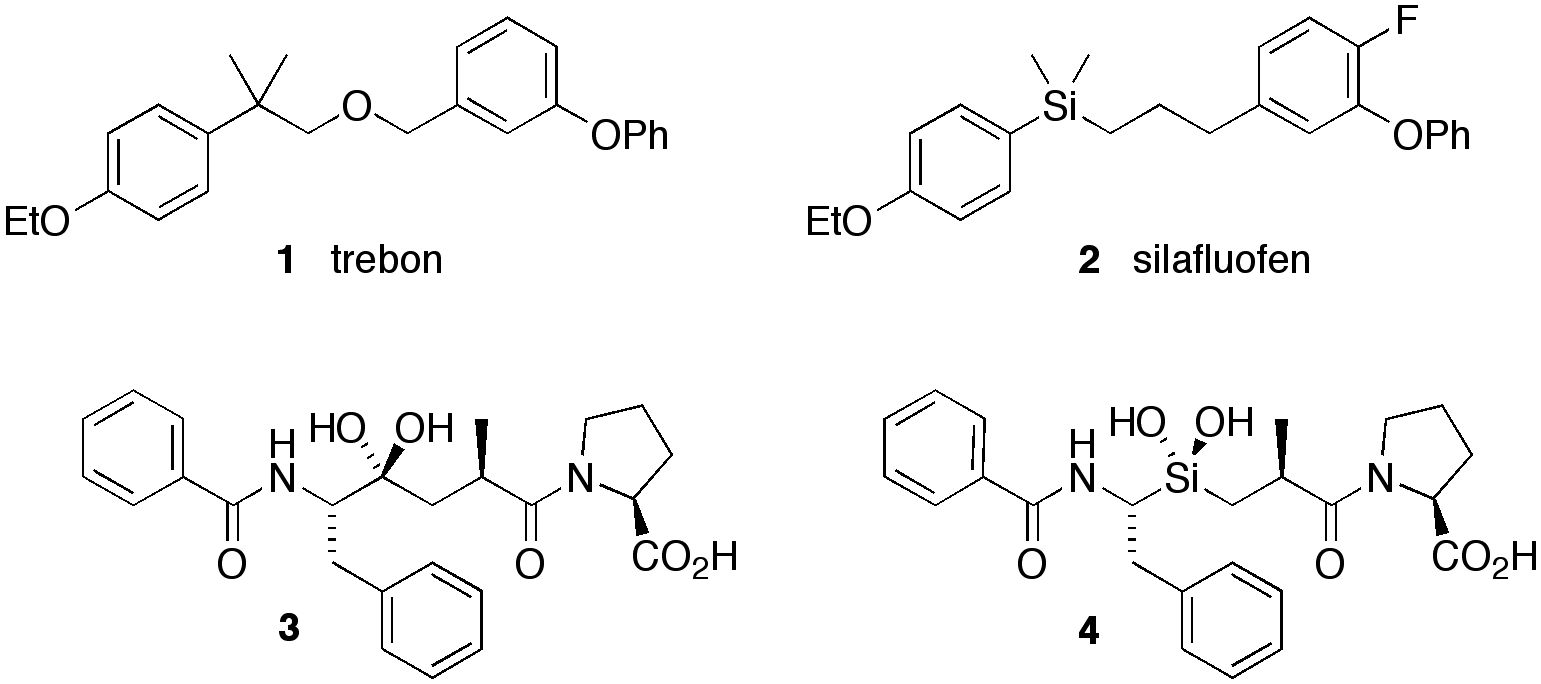Friday, 18 May 2007 - 10:40 AM
208 (Pfahler Hall)
454
Organosilanes in Drug Discovery
Drug discovery is a confluence of biological, organic and analytical chemistries, coupled with intellectual property considerations. Silicon, the element most similar in its properties to carbon, has a largely untapped potential in a drug design. This is in spite of well-developed chemistry and an absence of toxicity for organosilanes. Substitution of a carbon in a bioactive substance (e.g., 1) with a silicon (2) is the most subtle alteration possible, and generally leads to a new (and therefore patentable) compound. Silicon can also be used as a source of structures that are not possible, or are not stable, with carbon molecules. This latter approach is exemplified by the silanediol-based protease inhibitors such as 4, in which the silane mimics the unstable hydrated carbonyl in 3. Successful examples of these inhibitors and efforts to streamline their synthesis will be discussed, as well as highlights of bioactive organosilane history.
Back to Undergraduate Session Keynote Speaker - Professor Scott Sieburth
Back to The Middle Atlantic Regional Meeting (May 16 - 18, 2007)
